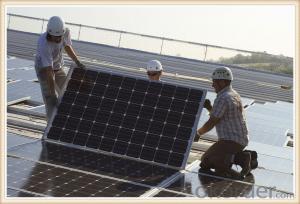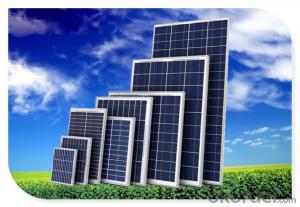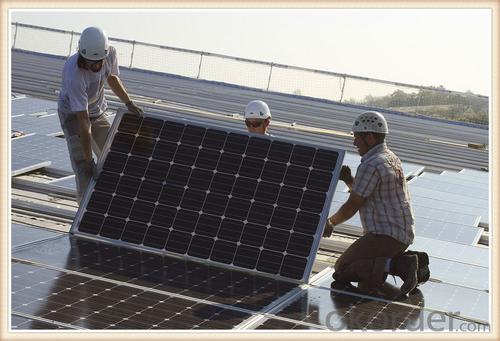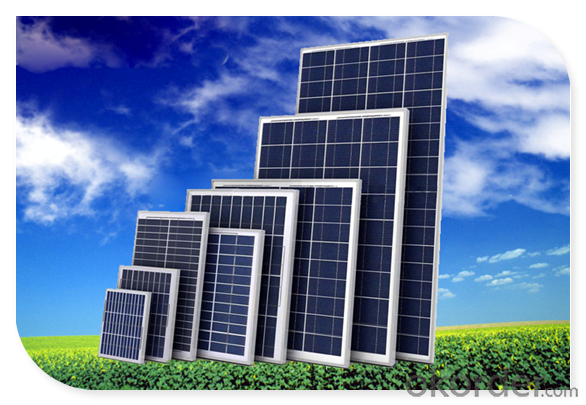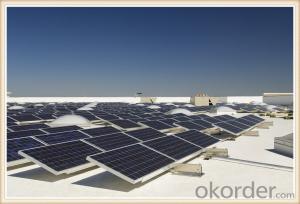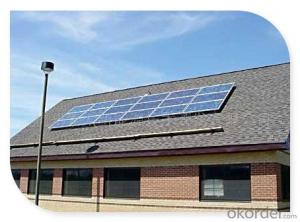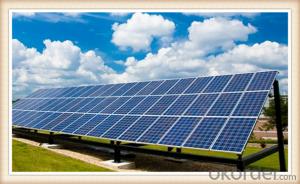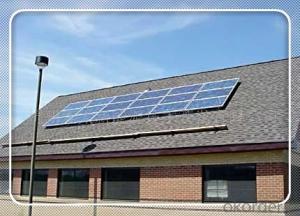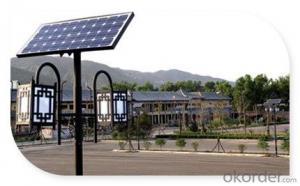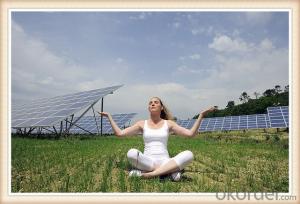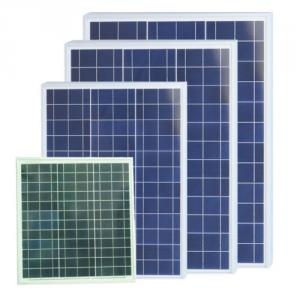Solar Panels Soft - 75w Efficiency Photovoltaic Chinese Solar Panels for Sale 5-200w
- Loading Port:
- China main port
- Payment Terms:
- TT OR LC
- Min Order Qty:
- 10000 watt
- Supply Capability:
- 100000 watt/month
OKorder Service Pledge
OKorder Financial Service
You Might Also Like
Specification
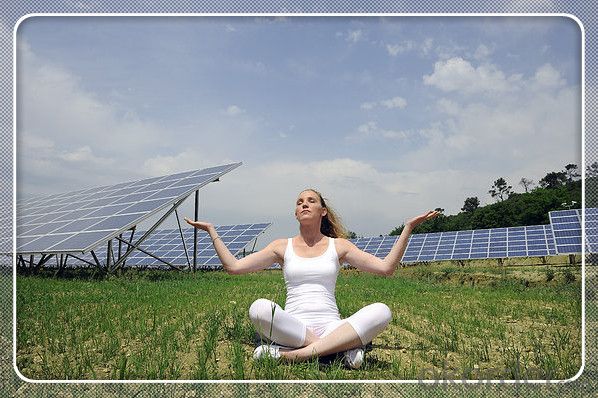
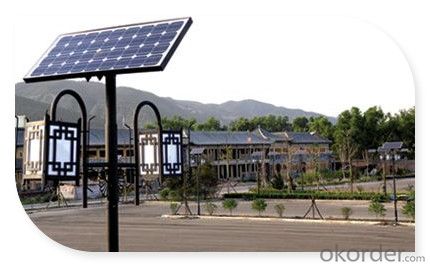
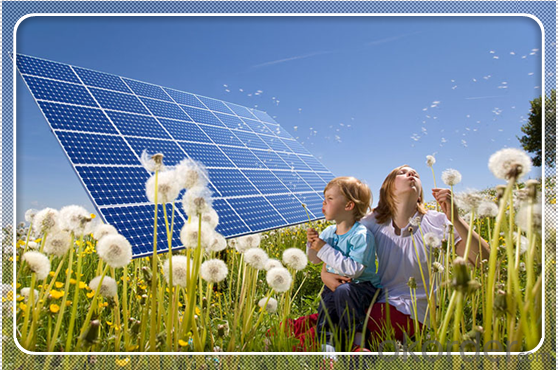
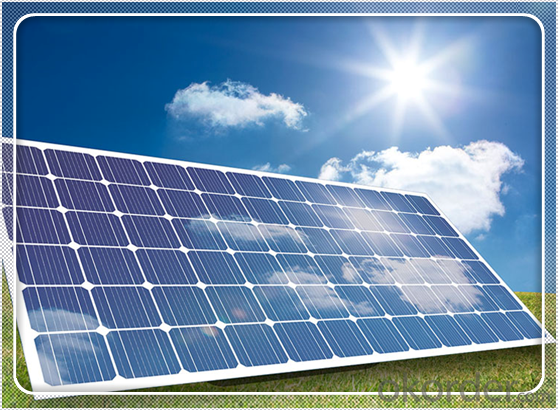
Solar Module Introduction
Solar Module is the core part of solar PV power systems, also is the highest value part of it. The function of Solar Module is to convert the sun's radiation to electrical energy, or transfer it to battery and store in it, or to drive the load running.
The Product has been widely used in space and ground, it mainly used for power generation systems, charging systems, road lighting and traffic signs areas. It could offer a wide range of power and voltage, and with high conversion efficiency, and long service life.
Solar modules use light energy (photons) from the sun to generate electricity through the photovoltaic effect. The majority of modules use wafer-based crystalline silicon cells or thin-film cells based on cadmium telluride or silicon. The structural (load carrying) member of a module can either be the top layer or the back layer. Cells must also be protected from mechanical damage and moisture. Most solar modules are rigid, but semi-flexible ones are available, based on thin-film cells. These early solar modules were first used in space in 1958.
Electrical connections are made in series to achieve a desired output voltage and/or in parallel to provide a desired current capability. The conducting wires that take the current off the modules may contain silver, copper or other non-magnetic conductive transition metals. The cells must be connected electrically to one another and to the rest of the system. Externally, popular terrestrial usage photovoltaic modules use MC3 (older) or MC4 connectors to facilitate easy weatherproof connections to the rest of the system.
Secification
Model Type | |
Peak Power-Pmax(W) | 5-200W |
Open Circuit Voltage-Voc(V) | 44.2 |
Maximum Power Voltage-Vmp(V) | 36 |
Short Circuit Current-Isc(A) | 5.4 |
Maximum Power Current-Imp(A) | 5 |
Maximum System Voltage | 1000V DC |
Maximum Series Fuse Rating | 10A |
Power Tolerance | -1~+3% |
Temperature Coefficients of Pmax | -0.45%/℃ |
Temperature Coefficients of Voc | -0.348%/℃ |
Temperature Coefficients of Isc | 0.031%/℃ |
Nominal Operating Cell Temperature | 44.5±2℃ |
Standard Testing Condition(STC) | Irradiance:1000W/m²;Temperature:25℃;AM=1.5 |
Qualification Test Parameters | |
Operating Temperature | -40℃~+85℃ |
Storage Temperature | -40℃~+85℃ |
Pressure Bearing | ≥5400Pascal/m² |
Wind Bearing | ≥5400Pascal/m² |
Mechanical Characteristics | |
Cell Size | Mono 125*125mm±0.5 |
No.of Cells | 72pcs(6*12) |
Dimension | 1580*808*40mm |
Weight | 15.5Kg |
Glass | 3.2mm High Transmission,Low Iron |
Frame | Anodized Aluminum Alloy |
Junction Box | IP65Rated |
Internal Diodes | 3 Bypass Diodes |
Cable | 1*4.0mm² Length 900mm |
Images
Packing & Shipping:
We have rich experience on how to pack the panels to make sure the safety on shipment when it arrives at the destination.
The normal size is packed by 25pcs/ carton / pallet. Paper carton for FCL shipping and wood carton for LCL shipping.
Warranty:
For c-Si panel: 25years output warranty for no less than 80% of performance, 10 years output warranty for no less than 90% of performance. Free from material and workmanship defects within 5 years.
For a-Si panel: 20 years output warranty for no less than 80% of performance, 10 years output warranty for no less than 90% of performance. Free from material and workmanship defects within 2 years.
FAQ:
(1)What price for each watt?
It depends on the quantity, delivery date and payment terms.
(2)What is your size for each module? Can you tell me the Parameter of your module?
We have different series of panels in different output, both c-Si and a-Si. Please take the specification sheet for your reference.
(3)Can you provide the peripheral products of the solar panels, such as the battery, controller, and inverter? If so, can you tell me how do they match each other?
Actually we are only manufacturer of solar panels, but we could try to source them for you in China if you need. We could provide you an optimal system design to instruct you how to install.
(4)Do you have the CE, TUV, UL Certification?
We’ve already passed all the tests, and any certificate is available.
(5)Have you ever sold your products to companies in my country?
Of course, we have customers in all general PV markets, but I think we should expand our market share along with the market growth.
(6)When did your company set up? You are a new company, how can I believe your quality?
We entered into Solar PV industry in 2005, now we have several plants in manufacturing of a-Si and c-Si panels, and our capacity is 220MW per year. Till now we have already passed all the tests by authorized laboratories, e.g. TUV, VDE, UL.
(7)Can you help us install the module if we cooperate with you?
We haven’t entered into installation sector, but we have the plan in near future.
(8) How do you pack your products?
We have rich experience on how to pack the panels to make sure the safety on shipment when it arrives at the destination.
(9) Can you do OEM for us?
Yes, we can.
(10)Can we visit your factory?
Surely, I will arrange the trip basing on your business schedule.
- Q: Can solar panels be installed on an RV or camper?
- Yes, solar panels can be installed on an RV or camper. This allows you to harness the power of the sun to generate electricity and charge your batteries, making your RV or camper more self-sufficient and reducing reliance on traditional power sources.
- Q: I have a solar panel i got for free and I don't know what to do with it. Its kinda big at about 20x 0and it puts our 2 VOC / .23 ISC. I don't know of anything that I could use it for. Its too big to say charge a phone or ipod....any suggestions??
- 2 volts rate at .23 ampere. It can be used to charge car battery. Put a 5 ohms rated 0 watts resistor in series between panel and 2.6 volts car battery to lower its voltage.
- Q: I'm going to pitch an idead to my school about switching to Solar Energy. What are positive and negative effects of the solar panels?Also what is the cost for installing them into a highschool?How much would the electricity bill decline afterwards?
- If you hope to get a solar panel that can run appliances and air conditioning.. then you are not even close to being realistic about what solar panels can do. If you really want to install a solar panel array on your home, then you need to talk to a company in your area that designes and installes them because every installation is different.. so you won't get an answer here on Yahoo. You can expect to spend $20,000 to $30,000 that will provide enough solar power for the average home.
- Q: My electric bill per month averages 800 kWh per month. I am looking at 65W solar panels. How many panels would I need to make my bill come to zero? I realize I also need an inverter to convert dc to ac.
- Your local installer will estimate this much more precisely than I can. Your main problem, as I see it, is not that you need this many solar panels. Your main problem is that you consume WAY too much electricity. You should probably cut your energy consumption in half BEFORE you invest in solar because it will be way more economic to eliminate the main consumers than to generate that wasted energy. I, for example, need no more than 80kWh/month for a household of two.
- Q: about solar panel
- The answer depends upon the type of solar energy captured . Photovoltaic Solar Panels convert the energy into electricity. This electricity is ran throughout the building via wires. Thermal Solar Panels typically capture the energy in the form of heat. The hot water is circulated through the building in water pipes.
- Q: Can solar panels be installed on any type of roof?
- Solar panels can be installed on most types of roofs, including flat, sloped, and metal roofs. However, the suitability of a roof for solar panel installation depends on factors such as its orientation, shading, structural integrity, and load-bearing capacity. It is recommended to consult with a solar professional to assess the specific requirements and feasibility for installing solar panels on a particular roof type.
- Q: so...do you think an online store dedicated to selling solar panels/systems will be a good business idea? Since green energy is the 'hottest' growing business area recently with usage growing about 30% per annum and investors putting all their money into solar energy, wind farms, biofuel, etc. I think when you sell solar systems online this will be the most appealing business model to the end customer...especially if you offer free installation on orders of say $000.
- Presently the technology is not there using green energy. Green energy is popular, but not as effecient as they claim. There is no product today whether it is electric cars, windmills, solar panels that have a lucrative payback. They all have their drawbacks. Your thinking is good, but the market and the techology just isn't there yet. If it were, you would see solar panels on every house. You already have the competition as you noted, and they aren't prospering... Good luck.
- Q: Our school is in the process of being built, but they have no plans to include any environmental benefits. I was wondering how to get a grant for solar panels (at least) or who I can talk to in order to get a grant.
- I do not want to argue over the pay back period for solar panels but from the information I have been gathering, payback could be from 5-5 years, not 40. I guess it depends on the amount of sun that each panel will recieve, so maybe both could be partially correct. Another item to be aware of is that while the cost of your panels and the electricity generated by them will remain stable or decrease significantly for 25 years, the cost of your other energy sources will generally be increasing , perhaps very significantly. Since your school is being built now, it will need a roof. There are photovoltaic shingles for this. Look into it yourself. Do a google search for google green and see what they are doing already. Present this information to your PTA and any other organization who might have influence. This is really a time for your generation to step up and stop listening to nay sayers. Think for yourself, study, research it and broadcast everything you learn to others.
- Q: Can solar panels be used for powering wireless charging stations?
- Yes, solar panels can be used to power wireless charging stations. Solar panels convert sunlight into electricity, which can be utilized to charge devices wirelessly through a charging station. This makes it a sustainable and environmentally friendly option for providing power to wireless charging stations.
- Q: a fiber optic network could distribute solar energy from warm states to the rest of the country. Using a Federally created program,the energy would be used through a trust program to benefit all of our citizens equally. It would create thousands of jobs and help us with our dependence on foriegn oil supplies. This is no different than work programs created by the Feds during the 930's depression era.
- To add to what others have said, more importantly, what will you do at night !! Electricity is VERY hard to store, so it has to be produced all the time. Even cloudy days cause problems. Lack of raw materials, costs compared to other forms, and the fact that miles across will not even be close. Think more like a state across to supply the US. Think avout this yourself or ask your parents if you are younger. To go solar are you willing to have your power bill be 0-20 times the current level for the next 30-50 years? You will find the answer in NO. I think those numbers will even be conservative. On your depression argument. Remember that the unemployment rate was 7% where it is 5% now. Also, the real end of the depression was WWII. I hope we don't do that again. Can you imagine trying to double federal spending? I don't think taxpayers would go for that. Start in your own back yard. Become energy efficient yourself. Install solar, use an electric car, and do everything you can before you spend other peoples money.
Send your message to us
Solar Panels Soft - 75w Efficiency Photovoltaic Chinese Solar Panels for Sale 5-200w
- Loading Port:
- China main port
- Payment Terms:
- TT OR LC
- Min Order Qty:
- 10000 watt
- Supply Capability:
- 100000 watt/month
OKorder Service Pledge
OKorder Financial Service
Similar products
Hot products
Hot Searches
Related keywords
